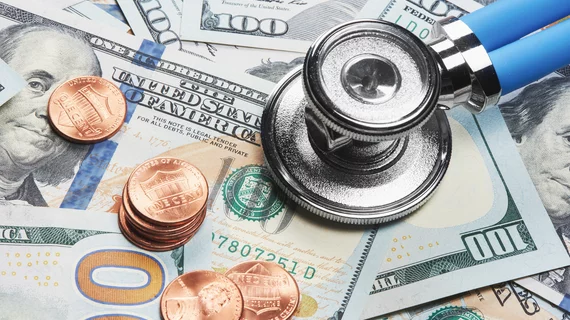Physician compensation now above pre-pandemic levels
Physician specialists saw gains in compensation last year even as healthcare providers were hit with enormous challenges and strains on their resources as a result of the COVID-19 pandemic.
Compensation for most physician specialties reached or exceeded pre-pandemic levels in 2021, according to the 2022 edition of Medical Group Management Association (MGMA) DataDive Provider Compensation report. After overnight disruptions in 2020, healthcare providers returned to a new normal in 2021 that allowed for compensation gains.
As hospitals and health systems dealt with staffing shortages and rising costs, specialist physicians who were hit the hardest in 2020 made significant gains last year, the report found. MGMA analyzed data from more than 192,000 providers across more than 7,700 organizations.
Here are some of the top physician specialist compensation increases in 2021 from 2020:
- Advanced practice provider (APP) - 3.98%
- Surgical specialist physician - 3.89%
- Nonsurgical specialist physician - 3.12%
- Primary care physician - 2.13%
The compensation hike comes after some specialties saw drops in total compensation from 2019 to 2020, including surgical specialist physicians. Nonsurgical specialist physicians also had the biggest drop in compensation during the first year of the pandemic, the report noted. Median total compensation for primary care physicians reached $286,525 in 2021.
"As we continue to emerge from the pandemic, I'm pleased to announce that data trends are more than stable, despite the countless challenges the industry has experienced over the past two years," Halee Fischer-Wright, MD, MMM, FAAP, FACMPE, president and CEO at MGMA, said in a statement. "Providing a more holistic view of the industry, the insightful and actionable data in this report is invaluable for healthcare practices—both today and for ongoing future planning."
While overall compensation trended upwards in 2021, compensation for providers varied widely by state. For instance, primary care physicians (PCPs) in the southern and western regions saw much higher compensation gains––7.29% and 6.28%, respectively––compared to physicians in eastern and midwest regions, who saw a 2.24% and 3.9% increase, respectively. PCPs in Mississippi earned $100,000 more than their counterparts in Arizona.
The compensation differences are even greater among surgical and nonsurgical specialists. Surgical specialty physicians earned upwards of $600,000 more in Nevada than their counterparts in Idaho in 2021, and nonsurgical specialty physicians reported earning $370,000 more in Mississippi than their counterparts in Idaho, MGMA found.

